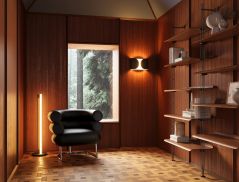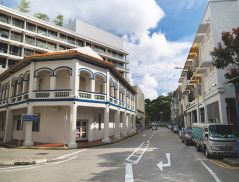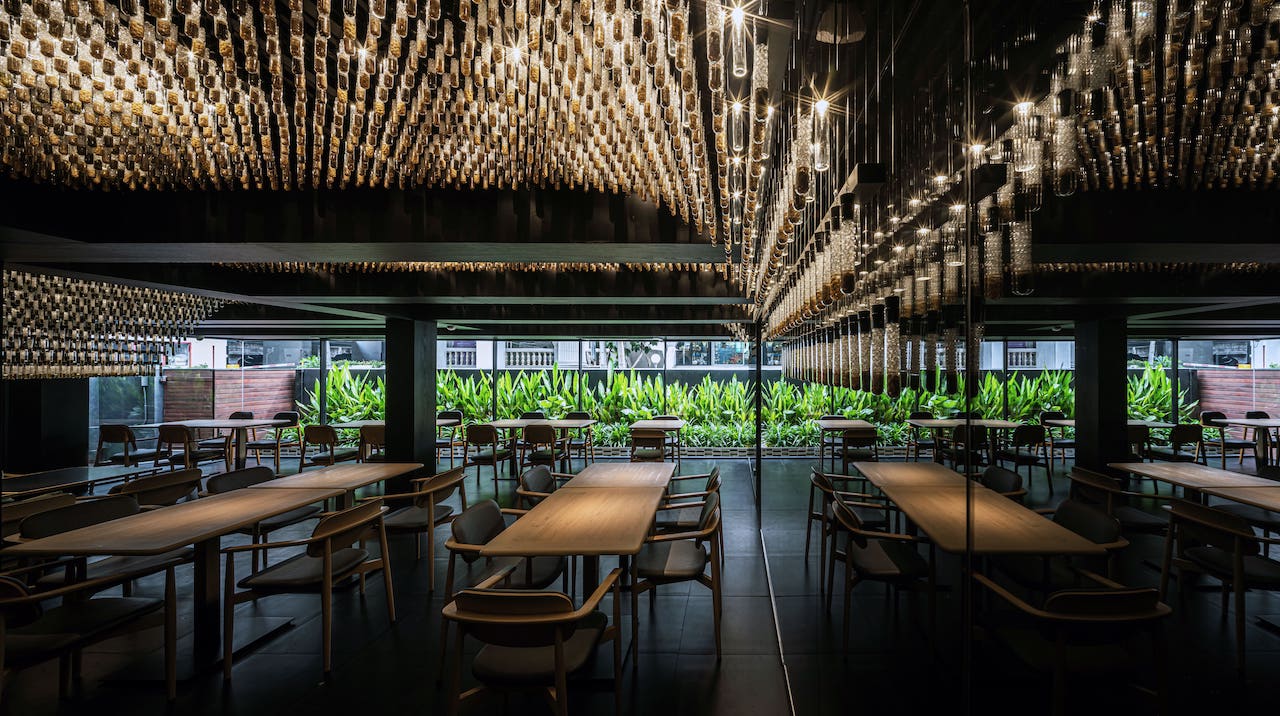
Le Du, awarded The Best Restaurant in Asia 2023 by Asia’s 50 Best Restaurants, underwent a renovation in late 2023. Chef-owner Thitid Tassanakajohn (most known as Chef Ton) engaged globally renowned Thai architect Amata Luphaiboon, principal and co-founder of Department of Architecture co., to work on the design as he’s been impressed with Amata’s work for many years.
According to the Bangkok-based architect, the brief was quite simple: “to create a space that’s worthy of Chef Ton’s wonderful creations”. Amata shares, “After talking with him for a couple hours, I highly appreciate his passion in modernising Thai dishes and bringing Thai cuisine to international recognition. His approach of using Thai ingredients, inspired by local dishes, turning them into new forms with contemporary techniques is quite similar to what we do as designers. So I like to use the same creative approach in creating this new Le Du.”
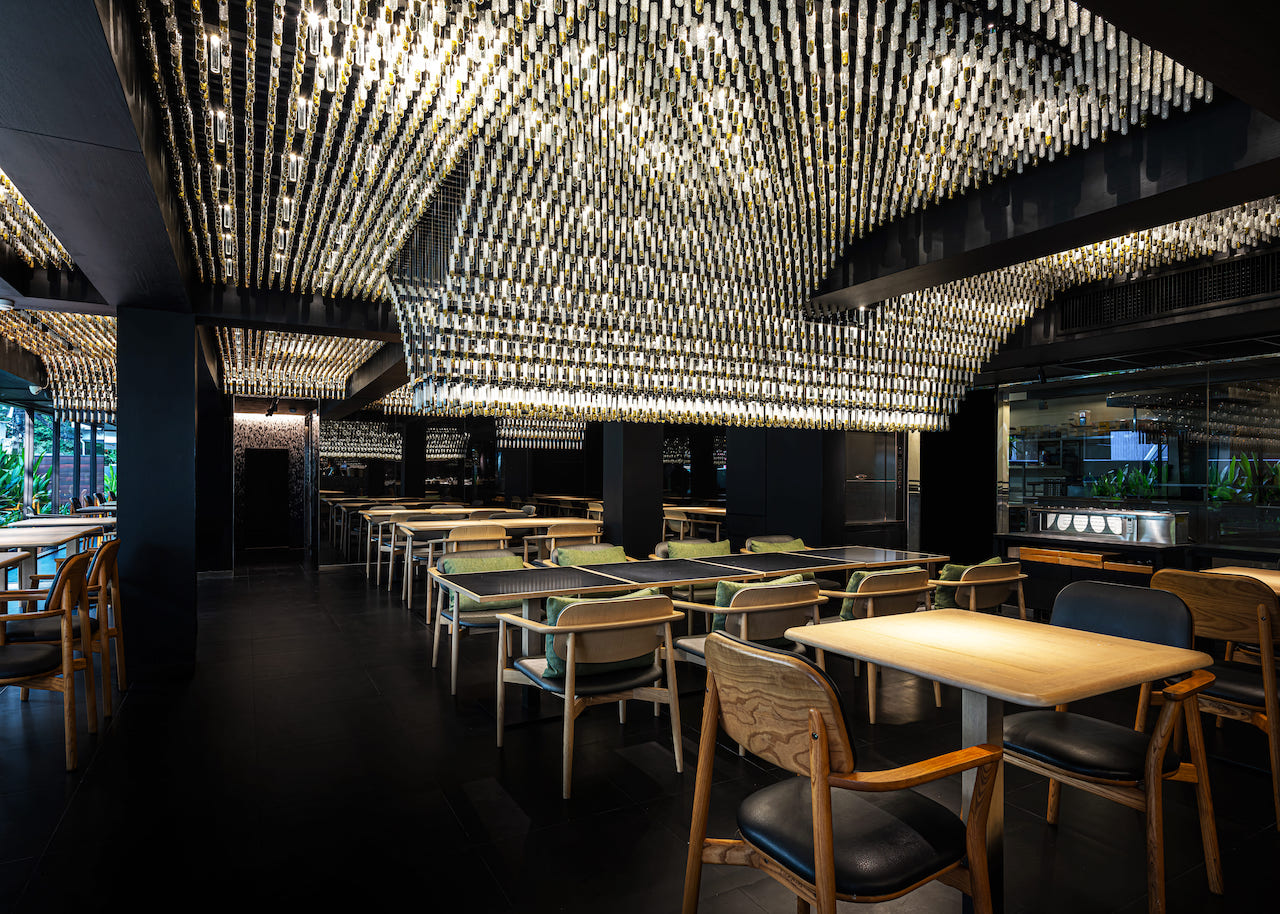
He continues: “The main design feature of the restaurant is the ceiling installation occupying the whole dining area. The installations are made of 10,000 over glass tubes (like the ones we used in school science projects), filled with certain types of Thai ‘seasoning’ and beads, hung in curves from the ceiling, and seamlessly incorporated with more than 1,000 tailor-made lighting fixtures (again in glass tubes).”
“This installation not only decorates the entire space with the colour scheme of the Thai rice plantation landscape, but also represents our shared creative approach with Chef Ton’s which is turning Thai materials into new forms via modern methods,” adds Amata. In line with Chef Ton’s intention to use all Thai ingredients, all construction materials are sourced locally. “We use special mosaic tiles (in the shape of rice grains) recycled from plastic buttons as the finishing material for restrooms and bar counters,” notes the architect.
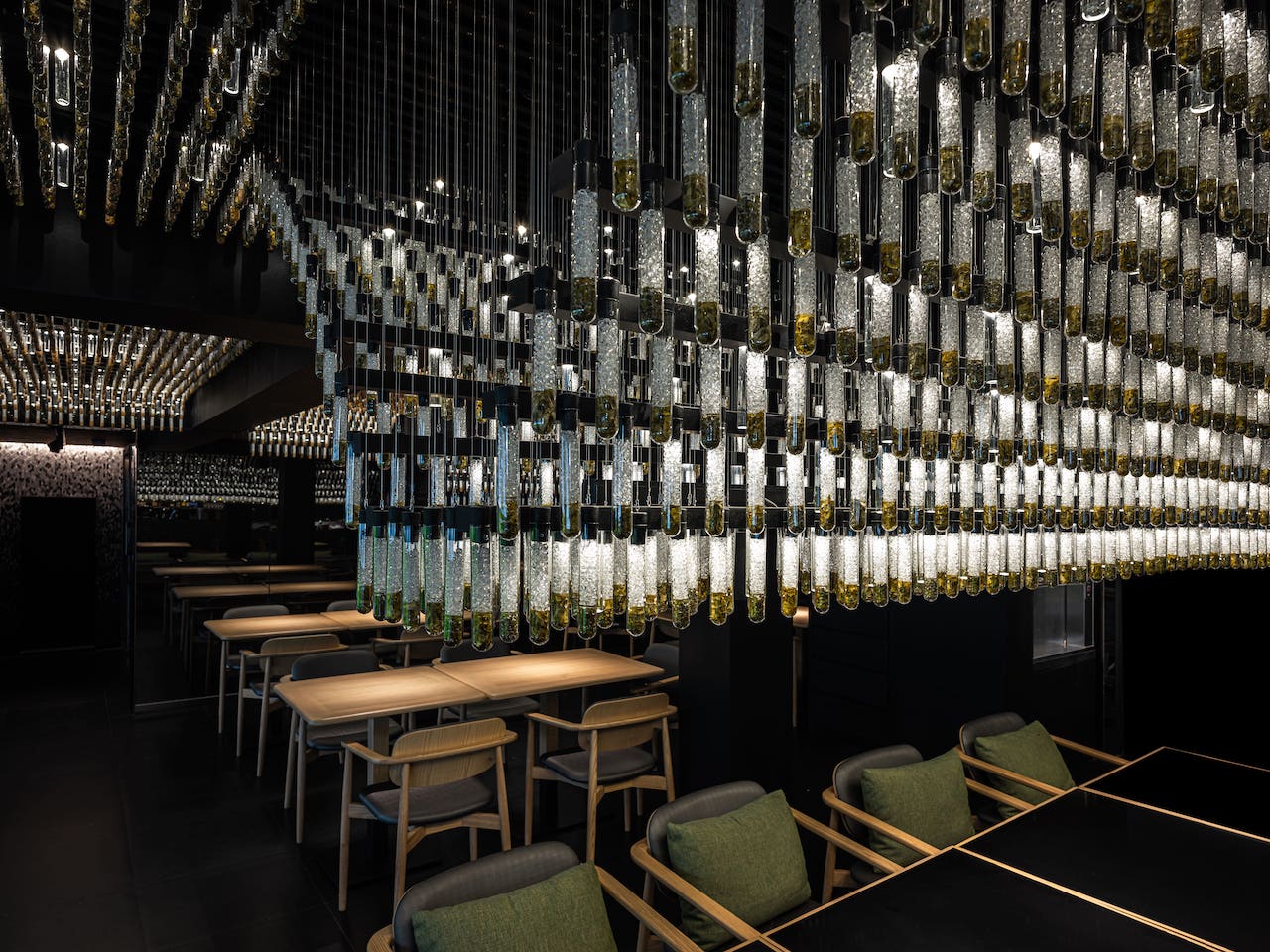
Depiction of the seasons
The name “Le Du”(in Thai “ฤดู”) translates to ‘seasons’, embodying the essence of a culinary journey through the country’s vibrant landscapes. The design concept aimed to transform the essence of Thai rice fields across seasons into a visually and experientially stunning ceiling art installation that creates an immersive and multi-sensory experience.
For instance, to depict the hot season when the soil turns dry and red, the ceiling installation uses dried chilli to showcase the fiery red hue. At a beginning of the rice farming cycle, farmers submerge the land with water to soften the soil. This water-covered surface is represented by the glittering crystal surface of the ceiling installation above the restaurant’s entrance. This symbolises the start of the rice farming ritual as well as the guests’ gourmet experience.
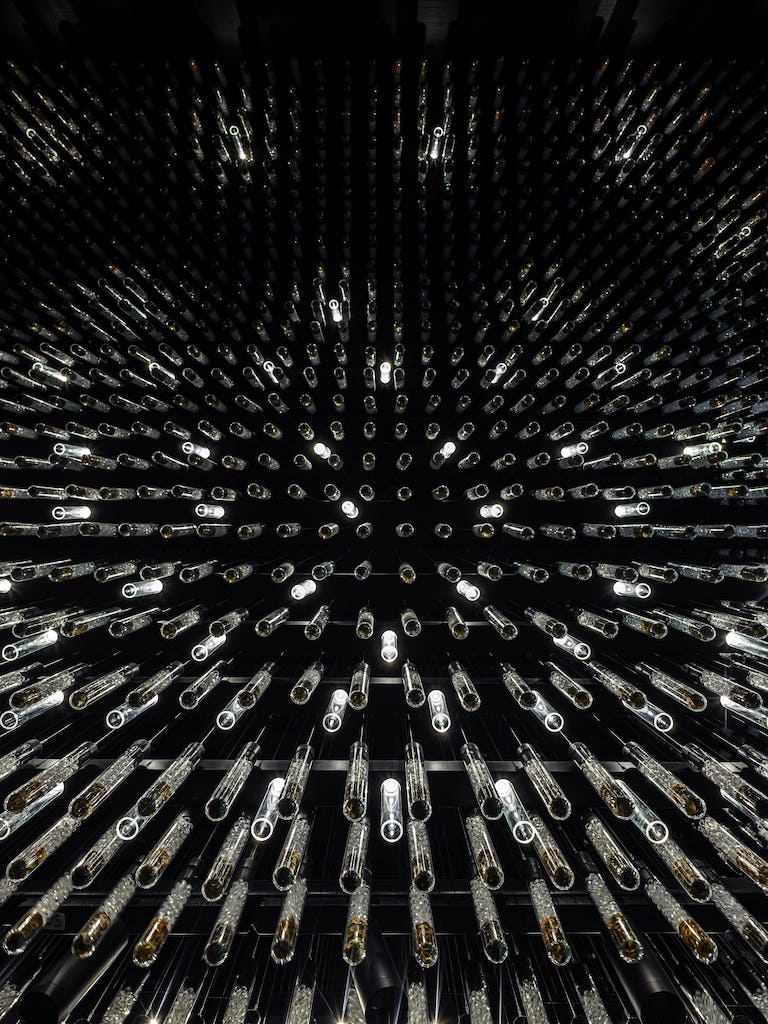

During the rainy season, the rice fields are renewed and blanketed in greenery. The restaurant embraces the lushness of this period with the ceiling installation in the centre of the space. This vibrancy is represented with green-hued ingredients like pandan leaves, kaffir lime leaves and green beans.
When winter arrives, the rice fields transform into a sea of gold. The colour palette of the installation in the rest of the restaurant echoes this golden glow, creating an ambience of warmth and sophistication. The installation above captures the spirit of this season with soybeans, golden rice, and caraway.


Overcoming challenges
The design team faced certain challenges with the original dining space which had a very low ceiling with irregular beam locations. “We cannot afford the height to have a false ceiling below the beams to cover them. We then decided to show the irregular beam pattern which actually led us to the pattern of berms in Thai rice fields. The problem became an important part of the visual outcome,” he says.
Another big challenge for Amata was the limited construction time of 30 days. He had two months to complete the design so that Le Du could re-open in time for the year-end festivities. He had to create all the important design elements to be produced off site and then installed on site in a short time frame.
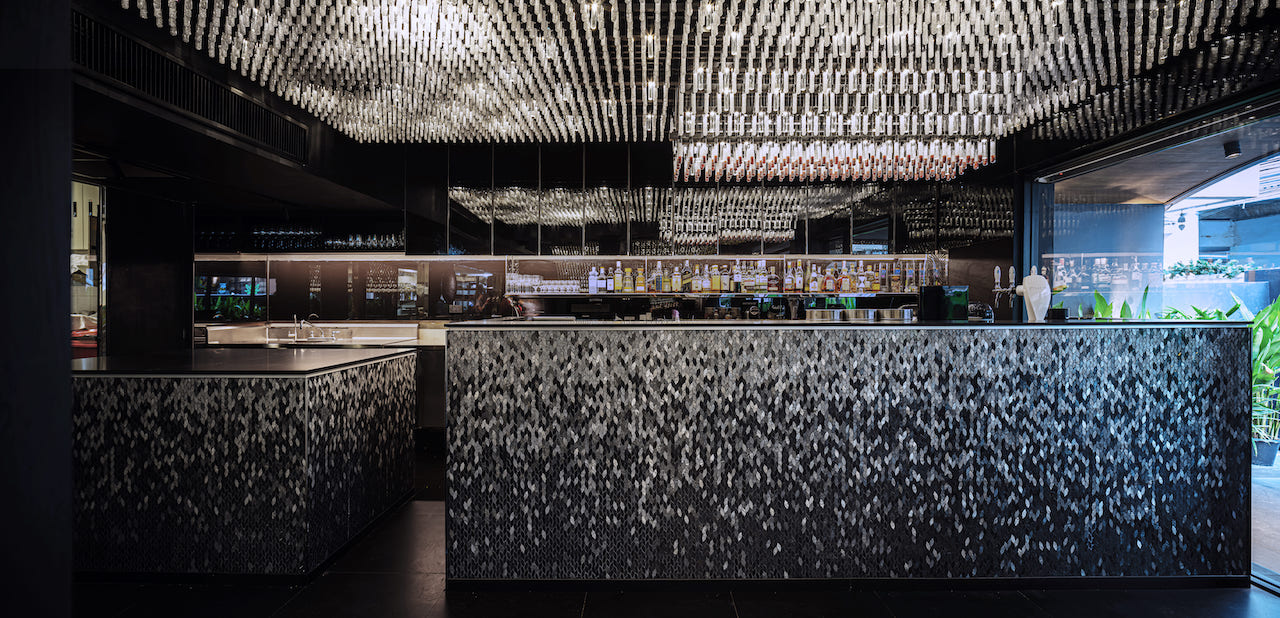
The original kitchen was in a good state and functioned very well so Amata kept it as it was, with minor adjustments on the finishing. “However, the dining space and the restrooms were adapted considerably, in order to create a clean and simpler volume of space. The old restrooms and a fixed bench were demolished to allow bigger and better flow of the seating spaces,” he adds.
For the furniture, he used a mix of new and old tables and chairs. “We re-coloured the old table tops and replaced the legs.” The restaurant’s seating capacity remains the same around 42 to 46.
When the restaurant reopened in late November 2023, Chef Ton and his team kicked-off their refreshed culinary experiences again. Ton who’s incredibly satisfied with the interior transformation shares: “it’s a unique story-telling of Thailand … just like Le Du and myself.”


 Share
Share




